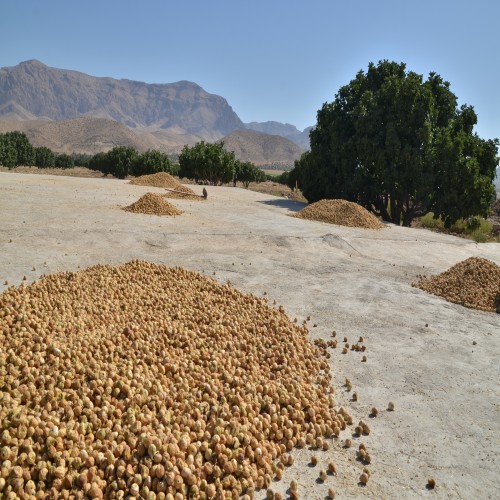

One of the best approaches to produce high quality dried figs, is to dry them traditionally. In this regard, there is a wide space called Eshpang that has a fundamental role. Eshbang is the place that fresh figs turn to sweet and aromatic products under the sunlight, and this happens away from moisture.
Eshpang is not only a drying flat surface but is a part of cultural and agricultural identity of fig producing areas in Iran, Especially in Estahban county.
What is Eshpang:
Eshpang is a cemented and stone paved surface inside the fig orchards. Eshpang is created as a flat surface and exposed absolutely under the sun light. This surface has accurate slope that designed away from rainwater, dew and keeping figs dry and away from humidity.
Eshpang's role in producing high quality dried figs
In traditional process, Orchardists collect entire ripe figs that fall naturally from the tree and transfer to Eshpang surface.
The process:
Advantages:
The future approach: combining tradition with new technology
Many growers efficiently blend traditional Eshpang with updated technological approaches, for instance:
Eshpang with its simplicity, still plays a critical productive role for growers' economy and livelihood. By blending native traditional approaches with new modernized practices meet to enhance crops quality, preserving customers health and safety and promoting sustainable exports of dried figs. Preservation of this precious indigenous knowledge is an important part of Iran's agricultural indigenous heritage.